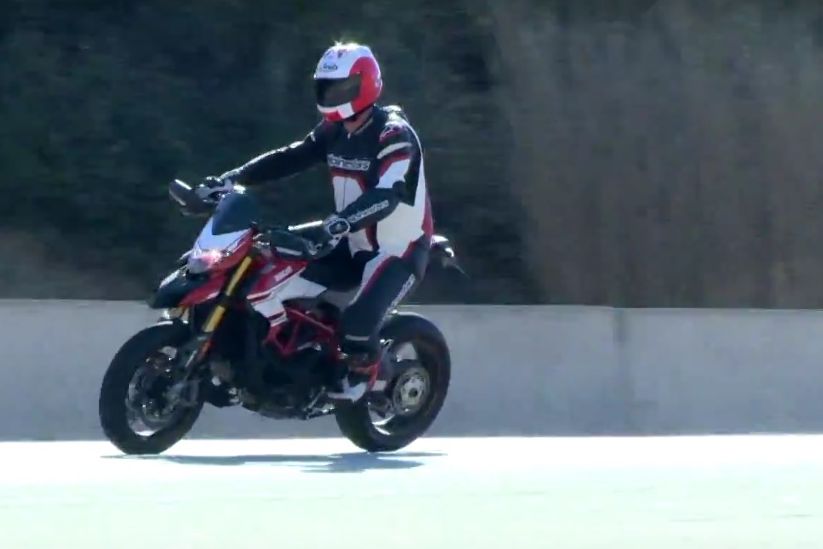First ride: BMW R nineT Scrambler review
Funny how the wackiest of concept bikes can lead to a production model that makes plenty of sense – Roland Brown rides BMW’s R nineT Scrambler

LAST summer, BMW unveiled an R nineT-based custom boxer called Concept Path 22 at the Wheels & Waves festival in Biarritz. It was named after, and theoretically built for, a dirt track leading to the local beach. It featured longer-travel suspension, a 19-inch front wheel, single seat, high-level pipes and a bloody great surf-board strapped to its side.

Fast-forward a year or so, and a two-day blast in Germany and Austria aboard the R nineT Scrambler has just confirmed that the thinking behind Path 22 was sound. The new model’s name lacks the imagination of the concept bike’s, and the surf-board is thankfully missing, but the Scrambler manages to combine its hipster vibe with very decent all-round performance and a lower price than the R nineT’s.
Main reason for that last bit is that it lacks some of the cool bits that have helped make the R nineT such a hit. It has cast instead of wire wheels, non-radial Brembo front calipers, and simpler suspension combining gaitered, right-way-up forks with a simple shock with no hand-turnable preload adjuster.
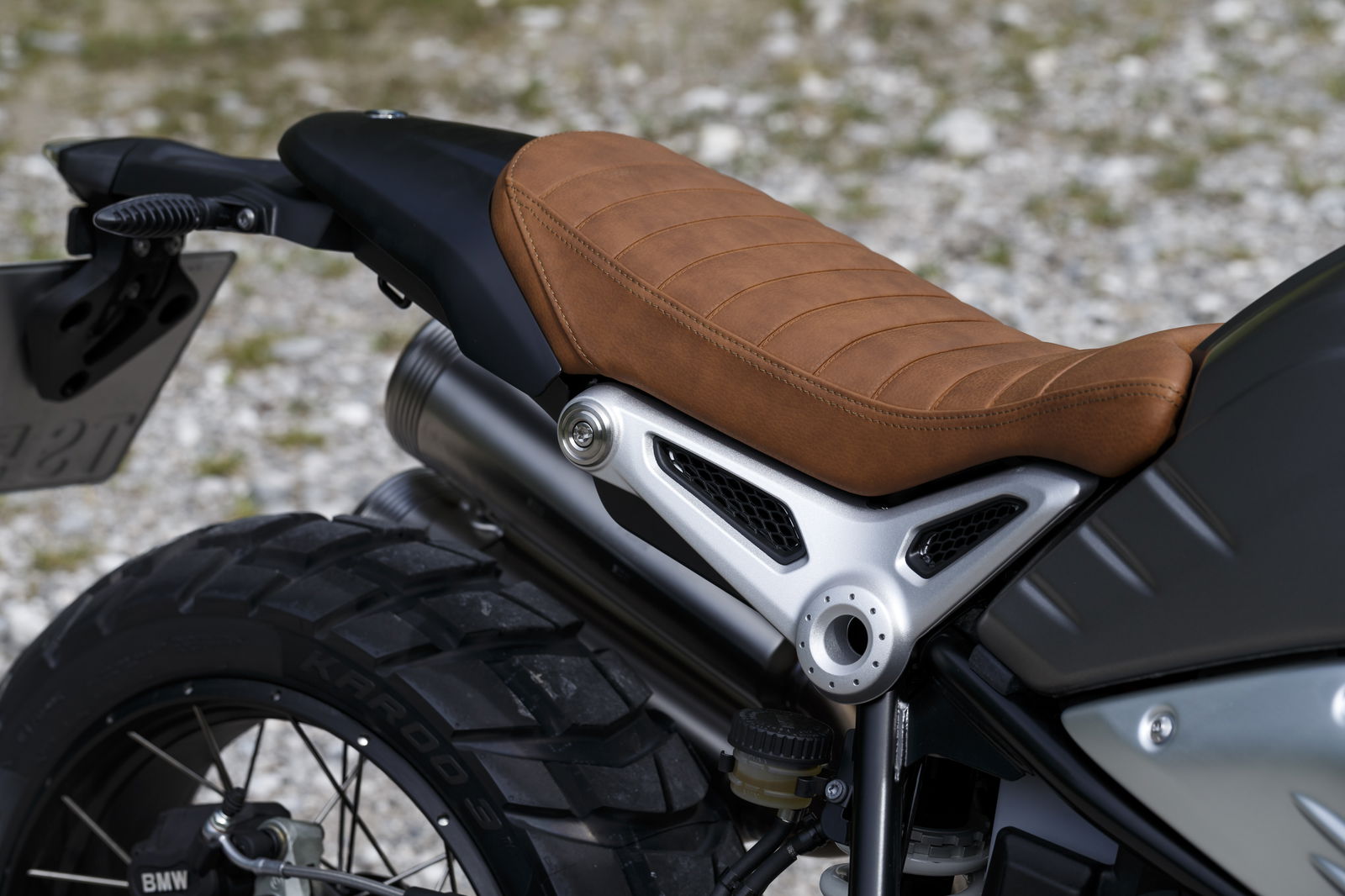
It also cuts costs with a steel rather than aluminium fuel tank, a single seat and no pillion footrests or hangers. And it does without R nineT parts including the tacho and the vintage style model plate riveted to the steering stem. But most of the good bits including the 1170cc, DOHC boxer motor are in place, so the Scrambler has plenty of air-cooled character on its side.

The motor’s output including its 110hp max are unchanged, despite the new high-level Akrapovič system that helps it get through Euro4. It pulled cleanly from low revs, punched hard in the mid-range, and even managed to feel respectably strong up top, with enough flat-twin vibration to add some character but not so much that it became annoying.
On an Alpine launch route that was so wet the surf-board might have come in handy after all, the BMW felt effortlessly long-legged on the straights, tonking forward enthusiastically with an engaging and improbably loud drone from the twin silencers. It headed for its 125mph-plus top whack feeling faster than it really was, due to a total lack of protection from wind or rain, combined with a riding position that’s slightly more upright than the nineT’s because the unchanged, one-piece handlebar is on risers.
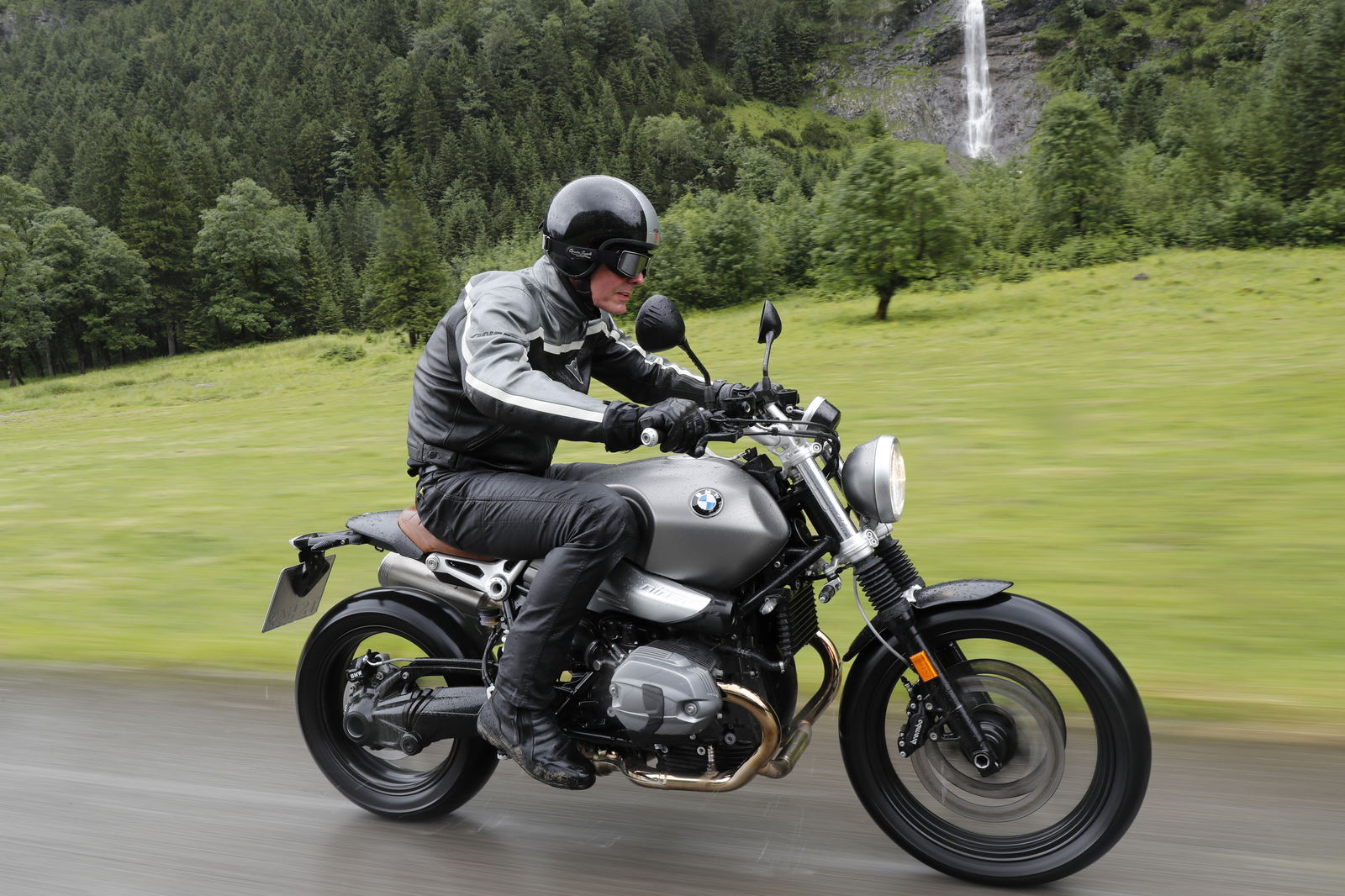
At lower speeds it was impressively manoeuvrable, helped by a generous steering lock and the fact that by scrambler standards the slim seat is a restrained 820mm off the ground. At 220kg with a full tank the BMW is respectably light. That tank’s 17-litre capacity is a litre down on the nineT’s but still good for over 160 miles, by which time the thinly padded seat will be making its presence felt.
Handling was good, when the road dried out enough to make the most of it. Direction changes were slightly slower than the nineT’s due to the 19-inch front wheel and a new steel-tube frame that kicks the forks out by a few degrees. But the Scrambler still steered with a neutral feel, and cornered without generating any sea-sickness from its well-damped suspension, whose travel of 125mm front and 140mm rear is longer than the nineT’s but well down on the likes of the R1200GS.
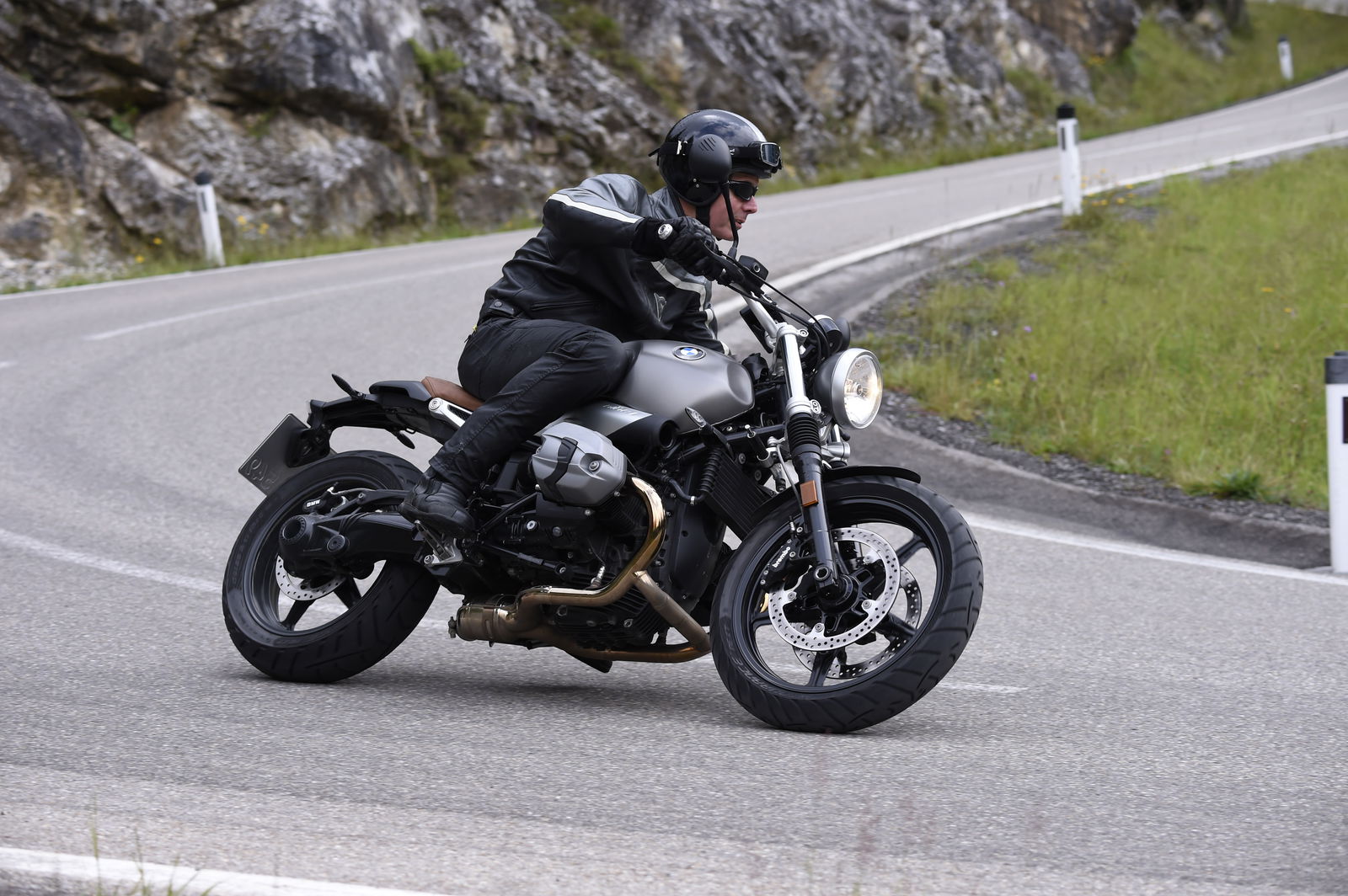
Stopping power was well up to the job too, though two-finger brakers will require a fair bit of force on the lever. Metzeler’s road-biased Tourance Next tyres gripped well even in the rain, although a few riders reported slides on the occasionally slippery roads. BMW’s basic ASC traction control is an option, for £310, and worth having although not to be relied on.
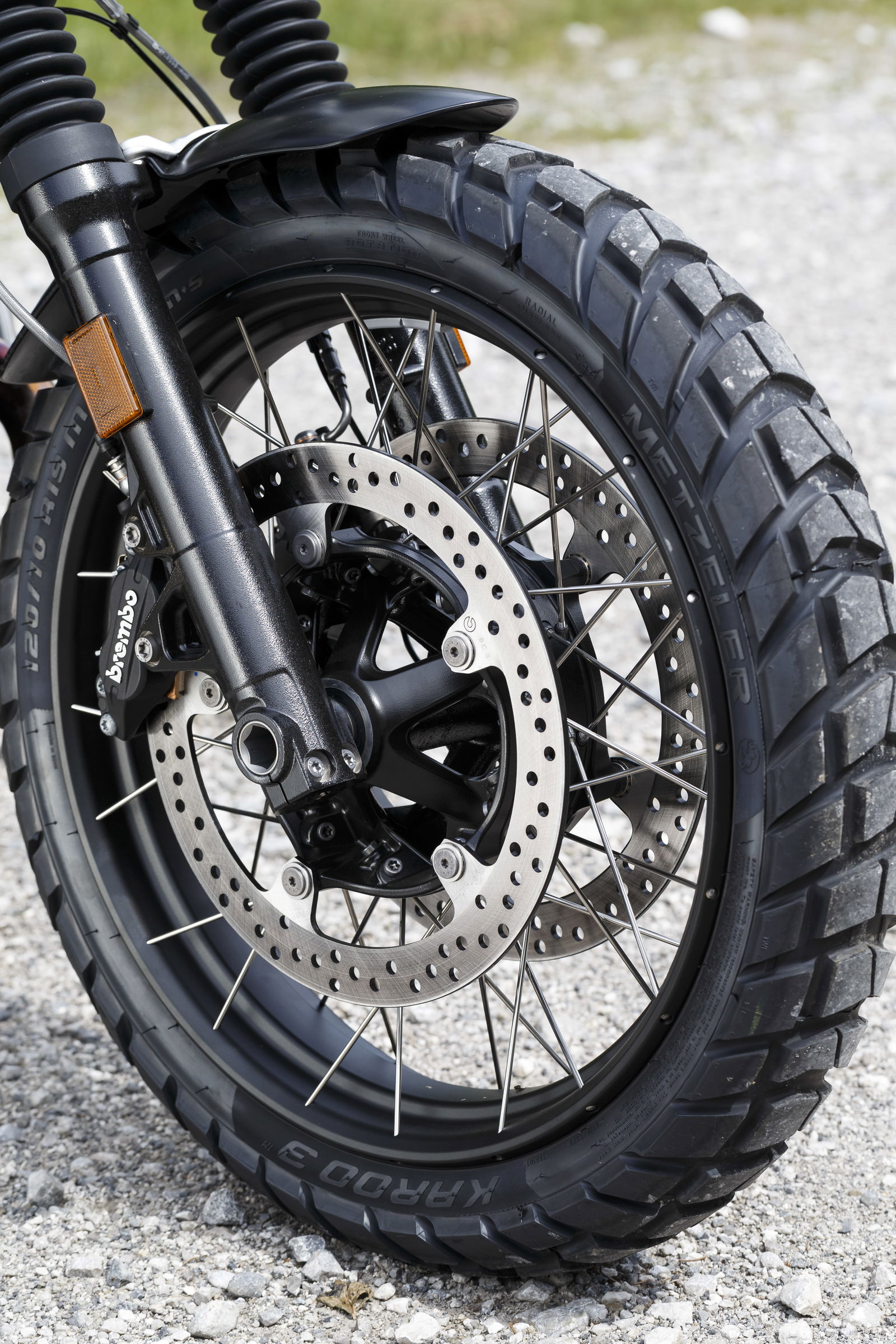
I was far more glad of the accessory heated grips (£240), which were invaluable in taking off the chill. Inevitably with a bike like this, there’s a vast range of other accessories, from cylinder head covers to titanium Akrapovic silencer. You can add practicality with a flyscreen and luggage, or off-road toughness with a headlamp grille, bash-plate, and the wire wheels from the nineT. As with that bike, the rear subframe unbolts to aid customisation.
Any cynics wondering about BMW’s decision to follow the fashion for retro-styled dual-purpose bikes can rest easy. The Scrambler is slightly more laid-back than the R nineT but its blend of torquey boxer motor, sound chassis and pleasingly raw, air-cooled charm is very much intact – and at £10,530 it’s a good bit less expensive into the bargain.
There's also an accessorised editon called the R nineT Scrambler X, with wire-spoked wheels, heated grips, LED indicators and optional off-road tyres at £11,090 on-the-road, a £150 saving on buying the extras seperately.
Read our BMW R nineT vs Triumph Thruxton R back-to-back test
Model tested: BMW R nineT Scrambler
Price: £10,530
Engine: 1170cc air/oil-cooled boxer, DOHC, radial eight-valve
Power: 110hp @ 7750rpm
Torque: 85.5lbft
Wet weight (with full tank): 220kg
Frame: Tubular steel
Suspension: 43mm fork with 125mm travel, single shock with 140mm wheel travel, adjustment for preload and rebound damping.
Brakes: Twin 320mm front discs with Brembo four-piston calipers, 265mm rear disc with twin-piston caliper, ABS as standard.
Tyres: Metzeler Tourance Next, 120/70-19 front, 170/70-17 rear
Seat height: 820mm
Fuel capacity: 17 litres
Claimed fuel economy: 62.7mpg at a constant 53mph, 47.8mpg at a constant 75mph
Claimed top speed: Over 124mph
Colours: ‘Monolith Metallic Matt’
Availability: 'On or around' September 22
Test bikes provided on the launch were fitted with the following accessories:
Single bench seat (replacing standard dual seat) - £231
Rear fairing - £147
Aluminium bar ends - £46
ASC traction control - £310
Heated grips - £240
LED indicators - £100
Picture credit: Albert Debus and Peter Musch

